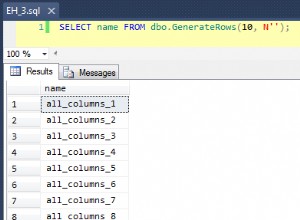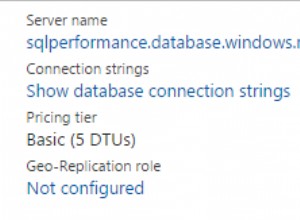Bạn cần tạo một UDF để chuyển đổi dữ liệu NVARCHAR thành byte trong Biểu diễn UTF-8. Giả sử nó được gọi là dbo.NCharToUTF8Binary thì bạn có thể làm:
hashbytes('md5', dbo.NCharToUTF8Binary(N'abc', 1))
Đây là một UDF sẽ làm điều đó:
create function dbo.NCharToUTF8Binary(@txt NVARCHAR(max), @modified bit)
returns varbinary(max)
as
begin
-- Note: This is not the fastest possible routine.
-- If you want a fast routine, use SQLCLR
set @modified = isnull(@modified, 0)
-- First shred into a table.
declare @chars table (
ix int identity primary key,
codepoint int,
utf8 varbinary(6)
)
declare @ix int
set @ix = 0
while @ix < datalength(@txt)/2 -- trailing spaces
begin
set @ix = @ix + 1
insert @chars(codepoint)
select unicode(substring(@txt, @ix, 1))
end
-- Now look for surrogate pairs.
-- If we find a pair (lead followed by trail) we will pair them
-- High surrogate is \uD800 to \uDBFF
-- Low surrogate is \uDC00 to \uDFFF
-- Look for high surrogate followed by low surrogate and update the codepoint
update c1 set codepoint = ((c1.codepoint & 0x07ff) * 0x0800) + (c2.codepoint & 0x07ff) + 0x10000
from @chars c1 inner join @chars c2 on c1.ix = c2.ix -1
where c1.codepoint >= 0xD800 and c1.codepoint <=0xDBFF
and c2.codepoint >= 0xDC00 and c2.codepoint <=0xDFFF
-- Get rid of the trailing half of the pair where found
delete c2
from @chars c1 inner join @chars c2 on c1.ix = c2.ix -1
where c1.codepoint >= 0x10000
-- Now we utf-8 encode each codepoint.
-- Lone surrogate halves will still be here
-- so they will be encoded as if they were not surrogate pairs.
update c
set utf8 =
case
-- One-byte encodings (modified UTF8 outputs zero as a two-byte encoding)
when codepoint <= 0x7f and (@modified = 0 OR codepoint <> 0)
then cast(substring(cast(codepoint as binary(4)), 4, 1) as varbinary(6))
-- Two-byte encodings
when codepoint <= 0x07ff
then substring(cast((0x00C0 + ((codepoint/0x40) & 0x1f)) as binary(4)),4,1)
+ substring(cast((0x0080 + (codepoint & 0x3f)) as binary(4)),4,1)
-- Three-byte encodings
when codepoint <= 0x0ffff
then substring(cast((0x00E0 + ((codepoint/0x1000) & 0x0f)) as binary(4)),4,1)
+ substring(cast((0x0080 + ((codepoint/0x40) & 0x3f)) as binary(4)),4,1)
+ substring(cast((0x0080 + (codepoint & 0x3f)) as binary(4)),4,1)
-- Four-byte encodings
when codepoint <= 0x1FFFFF
then substring(cast((0x00F0 + ((codepoint/0x00040000) & 0x07)) as binary(4)),4,1)
+ substring(cast((0x0080 + ((codepoint/0x1000) & 0x3f)) as binary(4)),4,1)
+ substring(cast((0x0080 + ((codepoint/0x40) & 0x3f)) as binary(4)),4,1)
+ substring(cast((0x0080 + (codepoint & 0x3f)) as binary(4)),4,1)
end
from @chars c
-- Finally concatenate them all and return.
declare @ret varbinary(max)
set @ret = cast('' as varbinary(max))
select @ret = @ret + utf8 from @chars c order by ix
return @ret
end




